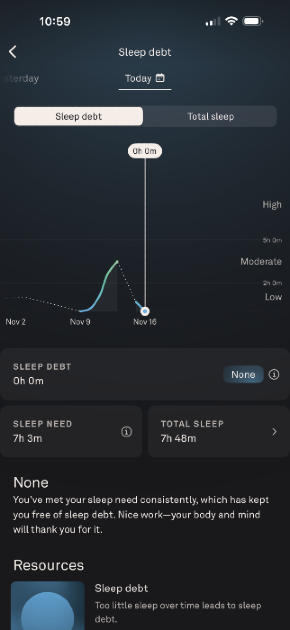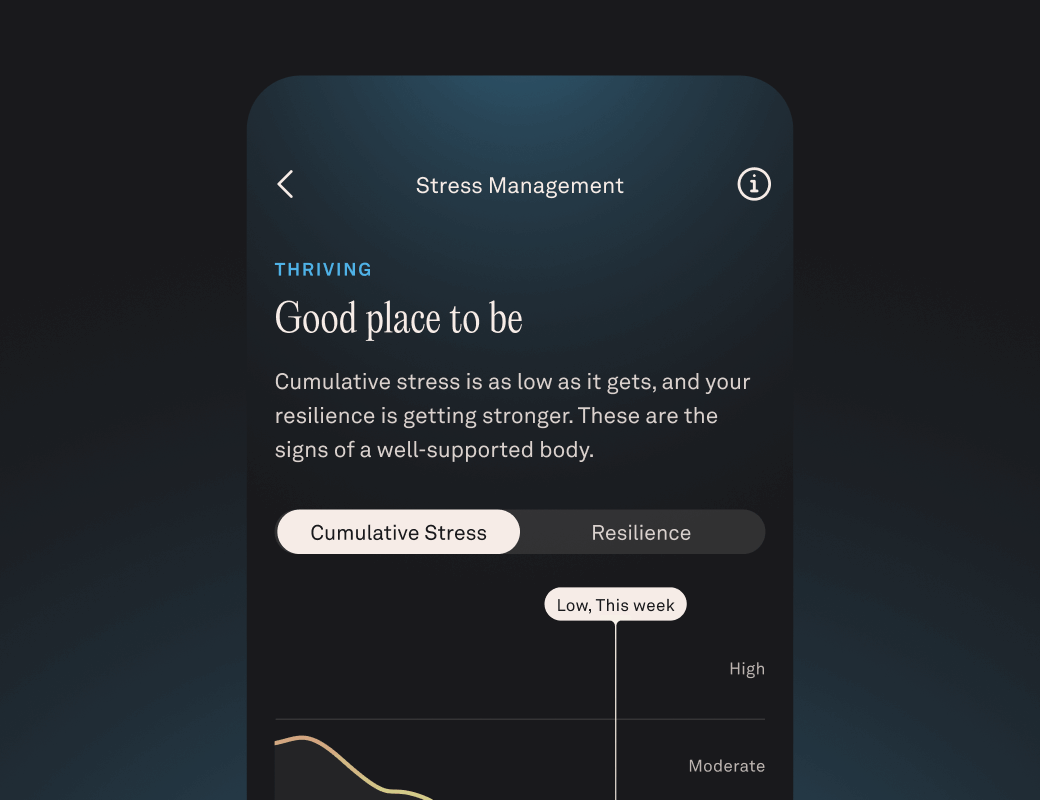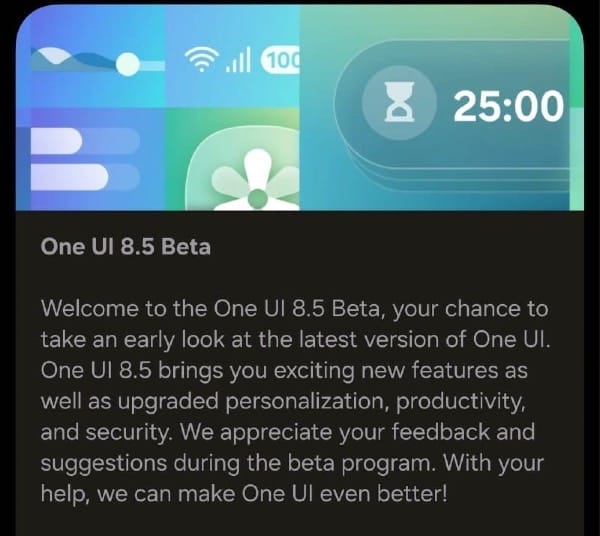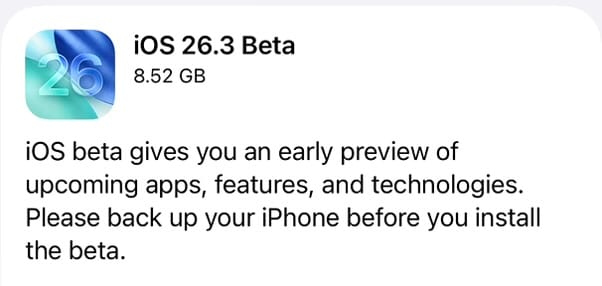After announcing these updates a couple weeks ago, Oura has officially begun rolling out a comprehensive app redesign alongside a powerful new health tracking feature called Cumulative Stress. The phased rollout will take a few weeks to reach all users, but Oura is now sharing more detailed information about what members can expect.
A Complete Visual Overhaul
Source: Oura
The redesigned Oura app represents the company's most significant interface update to date, focusing on making health data more intuitive and actionable. While keeping the core features users love, Oura has reimagined how information is presented across three main areas.
Today Tab: Cutting Through the Noise
The Today tab continues to serve as your daily health dashboard, but with a refined focus. Rather than overwhelming users with data, the new design emphasizes "one big thing"—the most critical score or insight you need to act on right now. This approach helps users quickly understand their body's readiness and identify any unusual metrics without getting lost in details.
Vitals: Color-Coded Health Signals
The Vitals section has been redesigned to offer quick-glance views of core health pillars including sleep, stress, and cardiovascular trends. What's particularly smart about the new design is the introduction of a color system that signals different body states based on your biometrics. These visual cues provide immediate feedback on how you're doing each day, all anchored to your unique, personalized baselines.
My Health: The Long-Term View
Perhaps the most transformed section is the My Health tab, which now offers clearer visualization of your long-term wellbeing. New graphics display your health strengths, important trends, and areas for improvement, making it easier to track progress over time.
The standout addition here is the Habits and Routines section, which directly connects daily behaviors—like morning workouts or consistent bedtimes—to measurable health metrics. This creates a clear cause-and-effect relationship that empowers users to see what's actually working and make data-driven adjustments to their routines.
Sleep Debt: A Long-Awaited Addition

One of the most significant additions to the sleep tracking suite is the new dedicated Sleep Debt feature. This addresses a gap that users and reviewers have noted for years - while competitors like WHOOP have offered sleep debt tracking, Oura previously only included it indirectly through the Sleep Balance contributor in the Readiness Score.
The new Sleep Debt feature provides a clear visualization of accumulated sleep deficit over time, with categories ranging from "None" to "High." Users can now see their Sleep Need (the amount of sleep their body requires) compared against Total Sleep, with the app calculating exactly how much sleep debt has accumulated. The feature includes trend tracking that shows sleep debt patterns over weeks, making it easier to spot when chronic under-sleeping is becoming a problem.
What makes this particularly valuable is the actionable feedback - the app acknowledges when you've met your sleep need consistently and provides context about what sleep debt means for your body and mind. This transforms sleep tracking from merely observing patterns to actively managing one of the most critical factors in daily performance.
Introducing Cumulative Stress: A Missing Piece of the Puzzle

While Oura has offered Daytime Stress monitoring and Resilience tracking for some time, the new Cumulative Stress feature completes the stress-tracking trinity by focusing on long-term, chronic stress accumulation.
Understanding the Difference
Cumulative Stress is designed to help users understand how their bodies accumulate and respond to sustained stress over time. Unlike acute stress (immediate reactions that can be positive or negative), chronic stress represents long-term strain that research has linked to anxiety, depression, cognitive impairment, and heart disease.
How It Works
The feature analyzes 31 days of Oura data to evaluate accumulated stress effects across five key physiological contributors:
- Sleep Continuity: Tracking how frequently you wake or toss and turn
- Heart Stress-Response: Measuring HRV and resting heart rate patterns
- Sleep Micromotions: Detecting involuntary movements or muscle twitches during sleep
- Temperature Regulation: Monitoring shifts in overnight skin temperature
- Activity Impact: Assessing how physical exertion affects stress recovery
Rather than simple aggregated scores, Cumulative Stress provides an objective physiological signal of long-term strain, revealing the "hidden toll" of unmanaged stress before it leads to exhaustion or burnout.
A Unified Stress Management Dashboard
To make all this stress data actionable, Oura has created a new Stress Management view within the My Health tab that brings together all three stress tools in one cohesive dashboard:
- Daytime Stress shows how your body responds to acute stress throughout the day
- Resilience tracks your ability to endure and recover from acute stress
- Cumulative Stress monitors overall prolonged physiological stress status
This integrated approach provides both short-term and long-term stress patterns in a single view, making it easier to spot trends, prioritize recovery, and maintain balance over time.
Oura Advisor Gets Smarter
Alongside the visual redesign, Oura has significantly expanded the capabilities of its AI-powered Oura Advisor. The update integrates more data sources across the app, including sleep trends, activity changes, and even dietary insights from the Meals feature.
Users can now ask Advisor to analyze their Habits and Routines data or work collaboratively to create personalized health plans. It's essentially evolved into a more comprehensive AI health coach that can connect dots across different data points that might not be immediately obvious.
Availability and Rollout
The new app design is rolling out to all Oura members over the coming weeks. The Cumulative Stress feature is available specifically for Oura Ring Gen3 and Oura Ring 4 users. Both updates represent significant steps forward in making wearable health data more meaningful and actionable for everyday users.
The Bigger Picture
These updates reflect a broader trend in wearable technology: moving beyond raw data collection toward contextual, personalized insights. By redesigning how information is presented and adding tools like Sleep Debt that directly address user-requested features and Cumulative Stress that looks at longer timeframes, Oura is helping users understand not just what their body is doing, but why it matters and what to do about it.
The Sleep Debt feature in particular represents Oura listening to user feedback and competitive pressure - it's been a standout feature in devices like WHOOP, and its addition closes a significant gap in Oura's sleep tracking capabilities. Combined with the Body Clock circadian rhythm tracking and the new Cumulative Stress monitoring, users now have a comprehensive picture of how short-term decisions impact long-term health outcomes.
The emphasis on connecting daily habits to measurable outcomes and the expansion of AI-powered guidance through Oura Advisor suggests a future where wearables become less about tracking and more about coaching—helping users make informed decisions rather than simply collecting data.
As these features roll out over the next few weeks, it will be interesting to see how users respond to the more streamlined interface and whether the comprehensive stress tracking proves valuable in preventing burnout before it happens.












Discussion